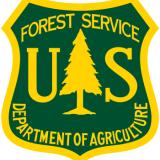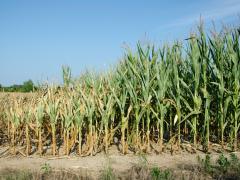NIDIS and Partners Launch National Soil Moisture Strategy
The National Integrated Drought Information System (NIDIS) is pleased to release A Strategy for the National Coordinated Soil Moisture Monitoring Network: Coordinated, High-Quality, Nationwide Soil Moisture Information for the Public Good (also known as the “NCSMMN Strategy”). Developed in part to fulfill the requirements of the NIDIS Reauthorization Act of 2018 (P.L. 115-423), this Strategy is the result of a 2-year multi-agency effort that included broad community engagement.
Background
Soil moisture is a critical land surface variable, impacting a wide variety of climatological, agricultural, and hydrological processes. As a result, soil moisture measurements are needed for applications ranging from agricultural monitoring, to weather prediction, to drought and flood forecasting. At the same time, the means and methods of monitoring soil moisture are undergoing rapid growth and innovation with the advent of new in situ and proximal sensors, new remote sensing technologies, and enhanced modeling capabilities. Despite these opportunities, there has been no coordinated national strategy for the deployment and maintenance of soil moisture networks, or for the development of nationally-integrated soil moisture data products.
Until now.
Sponsored by NIDIS, the National Coordinated Soil Moisture Monitoring Network (NCSMMN) is an ongoing collaborative initiative by federal agencies, soil moisture scientists, state mesonet operators, and others to plan for and support nationally-coordinated soil moisture monitoring, data assimilation, and product development. The newly-released NCSMMN Strategy represents a significant milestone for this initiative, and documents a roadmap forward and the resources needed to build a national network to provide coordinated, high-quality, nationwide soil moisture information for the public good.
The NCSMMN Strategy
The NCSMMN Strategy includes: a summary of current in situ networks, as well as remote sensing and modeling data resources; a discussion of network design considerations; guidance for in situ network installation and quality assurance/control; and considerations and recommendations for strategy implementation. The following nine recommendations are detailed as a part of the strategy:
- Determine a home agency and management structure for the NCSMMN.
- Establish a web presence and formalize communication and outreach planning for the NCSMMN.
- Formalize partnerships with the National Mesonet Program and existing monitoring networks.
- Develop a set of criteria for high-quality data sources.
- Support research necessary to develop or improve NCSMMN methodologies.
- Increase in situ soil moisture monitoring nationwide.
- Explore increasing partnerships with the private sector.
- Engage with the Citizen Science community.
- Develop, release, and promote NCSMMN products.
Implementing these recommendations will provide a unifying structure for national soil moisture efforts and will position the broader NCSMMN community to deliver transformative soil moisture products to the nation. Read the NCSMMN Strategy to learn more.














